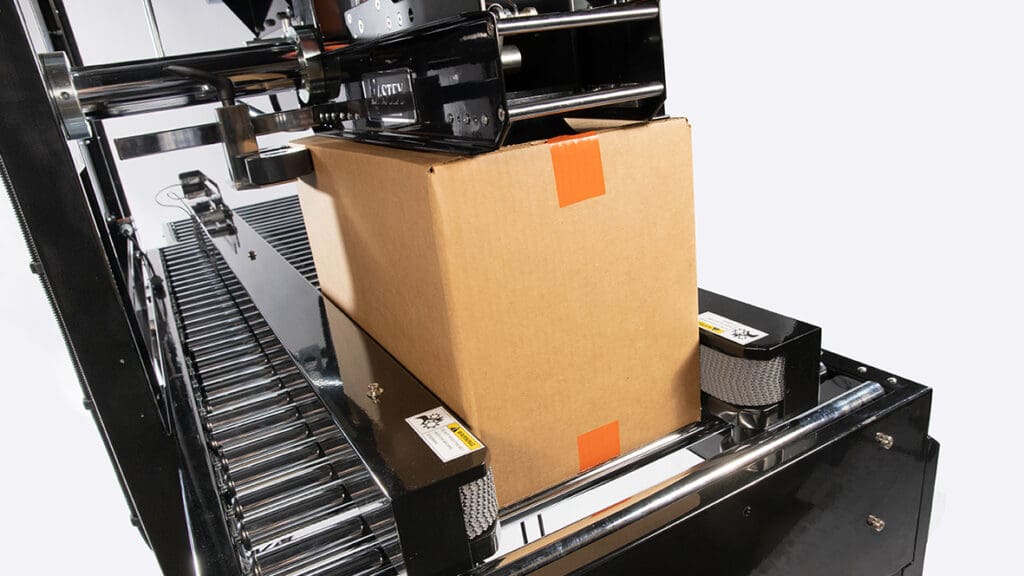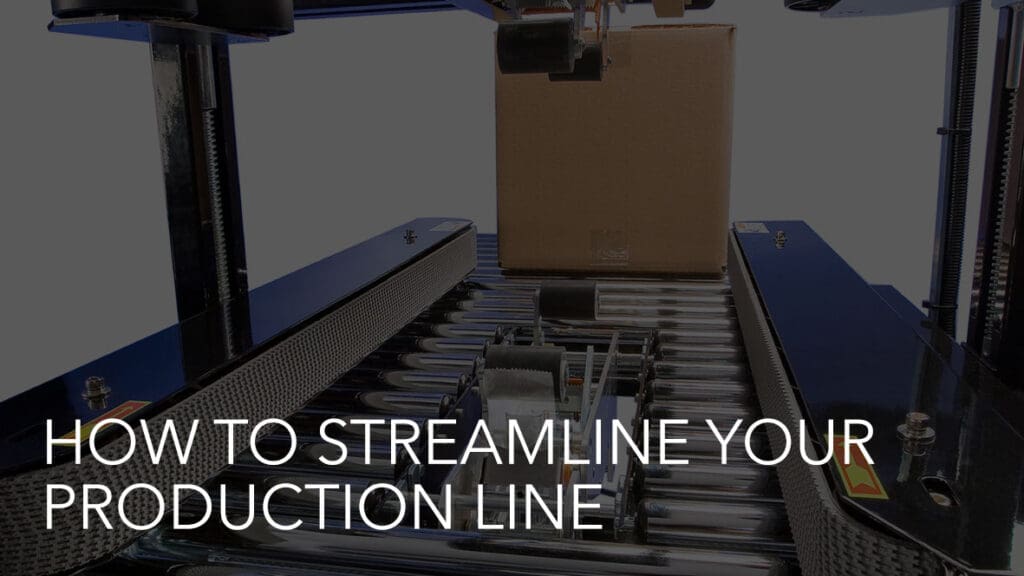Benefits of Case Tapers
Case taping is integral to the packaging process and helps ensure your product is secure when shipping to the customer. In fact, many packages sent to your door are sealed with a case taping machine. The use of uniform and random case taping equipment can be found in many different industries for sealing packages containing various products such as food and beverage, personal care products, building materials, and many others. Due to their versatility, case sealing equipment also plays a crucial role in the packaging process in most contract packaging operations.
Case tapers provide many benefits, but first, let’s cover what a case taper is. A case taper is used to automate the case taping process and can be ordered to fit a specific type of operation. For example, case tapers can be ordered to operate as uniform semi-automatic, uniform fully automatic, or random semi-automatic. So, what could case tapers bring to your packaging operation?

Increased Productivity
Integrating a case taper into your production process will increase your production line’s productivity and overall output. However, manual case taping takes a significantly longer time. By the time a case has been sealed on the bottom, filled with the product, and top sealed, a case taper could have sealed many more cases. Case tapers can be provided with infeed and exit feed roller pack tables. For example, Eastey’s SB-2EX case taper is built with industrial-strength roller beds to move boxes consistently through the taper at speeds up to 30 cases per minute.
Case tapers provide a huge benefit for employees. Many manual carton sealers require the same repetitive motion that can lead to fatigue, carpal tunnel, and downtime. Case tapers can help reduce those claims and create a better work environment for employees.
Cost-Efficient
Adding a case taper to your packaging line is cost-efficient and helps increase your ROI. A huge benefit of a case taper is the elimination of double taping. Have you ever received a package with multiple strips of tape covering the opening? That is double taping. This frequent problem and inconsistent look can be avoided with the help of a case taper.
Not only does a case taper help prevent double taping, but it offers consistent tape application and also reduces excessive tape usage. One strip of tape versus two to three saves money and provides a much cleaner looking product. And industrial tape rolls can be used instead of hand rolls which greatly reduces tape changeovers and saves the user time – just another way to save money in your packaging operation.
Overall, case tapers are a great addition to any packaging line. They can be integrated into any line in a facility and can be easily moved throughout the plant with the help of casters. As you can see, a case taper provides a fast and cost-efficient alternative to hand taping.
Looking to learn more about case taping and how to streamline your production line? Head to our other blog posts for more information:


To learn more about how Eastey can help your company streamline its manufacturing processes, visit our Eastey.com website or contact one of our knowledgeable packaging sales managers for more information today!

